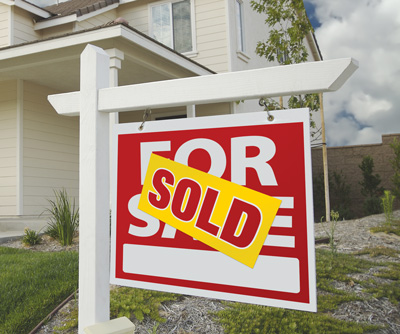REAL ESTATE
WHAT TYPE OF MORTGAGE DO YOU ADVISE?
There's no easy answer to your question. To get the most attractive rate and terms on your next home loan you'll need to compare options on several types of mortgages. Since each mortgage product is designed to meet specific needs, you and the lender will evaluate your particular wishes and circumstances in order to find the product that is right for you.
Interest rates are determined by the term of the loan, the amount of the down payment, and your credit score among other factors.
Fixed rate home loans are typically available with terms of 15, 20, 30 or 40 years. Generally, lower interest rates are offered for mortgages with shorter terms.
Adjustable rate mortgages (ARMs) have a variety of terms. They include a lower up front rate, but that interest rate will increase during the life of the loan according to your contract or as market interest rates change.
Compare rates from several lenders whether you are refinancing or searching for a new home loan. Only the lender you contact can give you the information you want. Often, your local bank or mortgage company will be your best choice.
Mortgage companies have a wide variety of loans. Remember that if you are paying less than 20 percent down, you'll also be paying for mortgage insurance.
FHA loans are fairly easy to get. While their mortgages haven't changed much, they do have their advantages:
- They have less stringent qualification and credit requirements, and the required down payment is lower as well.
- The drawback is that they take longer to arrange and close than a loan from your local lender would.
It takes time and effort to evaluate the market for what may be the largest purchase you'll ever make.

HOMEOWNERS ARE INCREASINGLY MOVING INTO THE 'SELL' LANE BUT THEY FACE PRICING DECISIONS
Rising home prices are bringing more sellers to the housing market. They are making decisions they have put off for years, taking jobs in other locations and enjoying fast sales of their homes.
It's good news for buyers who have more choices available to them. While buyers could pay a couple thousand dollars more than they would have paid last year, they have opportunities to decide from among some beautiful homes.
As sellers put their homes up for sale, they have an immediate dilemma: should they price high or go low? When fewer homes are available some agents prefer to price a home high hoping to draw higher initial offers. If the property is unique, and there are few comparable properties, this could conceivably bring a higher price at sale.
On the other hand, some agents price a property 10 percent lower in hopes of attracting more available buyers and perhaps start a bidding war.
New research tackles the issue. A study published in the Journal of Economic Behavior & Organization recently found those who set the initial asking price 10 percent to 20 percent lower saw a slight decrease in the selling price from what they asked. Those who priced a home 10 to 20 percent higher than homes in the neighborhood led to an impact of about $500 more in the selling price.
The researchers explored "anchoring," the tendency to rely on the first piece of information offered when making decisions. When buyers focus on the higher price as their anchor they may turn to the good attributes of the home that justify that price.
Real estate agents know that sellers want fast results which is why they recommend selling at a price that's comparable with similar homes in the neighborhood. They're realistic and fear that pricing it much higher than comparable property will take a longer time to sell, if it sells at all.
Still, many buyers may practice anchoring and convince themselves that the home is worth more because of its features. It's still a decision for sellers: price high, go low or price it comparably.
DO YOU THINK MORTGAGE INTEREST RATES WILL DECREASE? AND ARE THE NEW HYBRID ARMS A GOOD DEAL?
When the Federal Reserve said it would begin winding down its purchase of mortgage based securities, a program designed to keep mortgage interest rates low, the average 30 year fixed rate mortgage went up to 4.5 percent. Advisors for Kiplinger's Personal Finance say the mortgage payment on a $200,000 home is about $115 higher than it was when the interest rate was 3.5 percent.
Today's rate is still historically low, but some say it could drop slightly or it might rise slightly.If you need a mortgage, lock in the best rate you can get now. You can lock in your mortgage rate until you close, but the longer the lock in period, typically 30, 45, 60 or 90 days, the greater the cost. It's generally an eighth of a percentage point for every 15 days beyond an initial 30 days which doesn't cost anything.
Remember that it's still a great time to buy because home values haven't returned to the market's peak of 2006. They are still 34 percent below their crest, reports Clear Capital, a real estate data provider. Hybrid ARMs can be a good deal.
With a hybrid adjustable rate mortgage the interest rate is fixed for a number of years and adjusts annually thereafter. It's a safe choice. A 5/1 ARM may charge 3.37 percent
interest for the first five years and adjusts annually after that, often to a cap of two percentage points. Hybrid ARMs are available for three, five and seven years.
Some credit unions offer a 5/5 ARM. The starting interest rate remains the same for the first five years, then adjusts every five years thereafter, typically with a 2 percent cap. At Navy Federal, one of the largest credit unions, the initial interest rate on its 5/5 ARM recently was recently 2.375 percent. In five years, it would adjust to 4.375 percent, just slightly more than the average 30 year fixed rate at the time of origination.
SEVEN KITCHEN REMODEL PROJECTS THAT CAN FIT INTO ALMOST ANY BUDGET
Home advisors for bankrate.com say remodeling a kitchen may sound like a big, expensive affair. But the truth is that there are ways to breathe new life into any kitchen without spending a lot.
- A spokeswoman at Lowe's says paint gives the biggest bang for your buck. It instantly changes the feel of a space. If you do it yourself, it costs almost nothing.
- For $150 to $500, you can give your kitchen a snazzy look with the installation of a fancy new faucet. You don't have to be a plumber to install one, says Jamie Gold, author of New Kitchen Ideas That Work.
- Changing an appliance may push the outer limit of your budget. But if you're willing to accept a minor imperfection, it's possible to pick up a new range for $500 or less at a home improvement store or a "scratch and dent" place.
- Counter tops will stretch your remodeling budget, but nice options are available. For example, Gold says granite tile can give you the granite look without the price of a granite slab. Save money by installing the tiles yourself.
- New floors can be an expensive remodeling project, but they will have a dramatic effect on appearance. Don't overlook vinyl flooring, some of which looks like stone and costs about $2 a square foot. If you're handy, you can install it yourself.
- Adding a back splash behind your sink and counters is a small change that can have a big impact. Christine Tse, an interior designer in New York City says it can change your kitchen from "drab to fab." You can find nice options at about $200 for 12 square feet, or you can spend several times that for designer materials.
- To get appliances and cookbooks off the counter top add some floating shelves to a wall. Thick floating wood or glass shelves cost about $40 each.
LOOKING FOR A CONDO IN A HIGH RISE? YOU WON'T FIND ONE ON THE 13TH FLOOR
When construction is finished on a 60 story building in Manhattan it will include an indoor-outdoor theater, a big swimming pool, a library and more. What it won't have is a 13th floor. Builders and developers aren't generally superstitious, but they say not having a 13th floor is a no brainer. They don't want to exclude prospective condo buyers who happen to
be superstitious.
Oddly, though most people don't buy into the idea of the unlucky 13, many don't want a 13th floor address, especially if they're buying a condo in New York, Brooklyn, Manhattan or Miami. Some buildings actually have a 13th floor but it's called the 14th floor and no one seems to recognize that fact.
A number of high profile buildings will begin residential areas on the 14th floor with lower floors used as commercial spaces or parking garages.
The decision to omit the 13th floor occurs well before ground is broken. Developers and marketers discuss floor layouts, but the developer has the final say. In one Miami high rise, none of the 13th floor condos sold until the floor was renamed. In a high profile Manhattan building, the last unit on the 13th floor finally sold.

© 2014 TLC Magazine Online, Inc. |